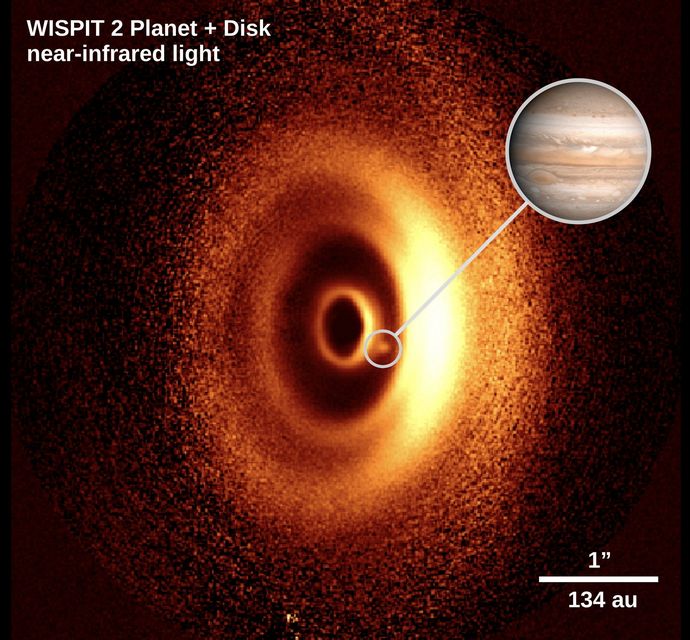Groundbreaking discovery was made using one of the world’s most advanced observatories in Chile
Detected at an early stage of formation around a star similar to our own sun, the planet is estimated to be about five million years old and is likely to be a gas giant of similar size to Jupiter.
The study, which was led by Leiden University, University of Galway and University of Arizona, has been published in the international journal Astrophysical Journal Letters.
The groundbreaking discovery was made using one of the world’s most advanced observatories – the European Southern Observatory’s Very Large Telescope (ESO’s VLT) in the Atacama Desert in Chile.
To coincide with the research being published, the European Southern Observatory – the world’s foremost international astronomy organisation – has released an image of the discovery as its picture of the week. The new planet has been named WISPIT 2b.
Dr Christian Ginski, lecturer at the School of Natural Sciences, University of Galway and second author of the study, said: “We used these really short snapshot observations of many young stars – only a few minutes per object – to determine if we could see a little dot of light next to them that is caused by a planet.
We instead detected a completely unexpected and exceptionally beautiful multi-ringed dust disc
“However, in the case of this star, we instead detected a completely unexpected and exceptionally beautiful multi-ringed dust disc.
“When we saw this multi-ringed disc for the first time, we knew we had to try and see if we could detect a planet within it, so we quickly asked for follow-up observations.”
.jpg)
This image of WISPIT 2b taken with ESO’s Very Large Telescope is the first clear detection of a baby planet in a disc with multiple rings. Photo: ESO
It is only the second time a confirmed planet has been detected at this early evolutionary stage around a young version of our sun. The first one was discovered in 2018, by a research team also involving Dr Ginski.
WISPIT 2b, some 430 light years away, is also the first unambiguous planet detection in a multi-ringed disc, making it the ideal laboratory to study planet-disc interaction and subsequent evolution.
The planet was captured in near infrared light – the type of view that someone would see when using night-vision goggles – as it is still glowing and hot after its initial formation phase.
The team at the Netherlands’ Leiden University and University of Galway captured a spectacular clear image of the young proto-planet embedded in a disc gap. They also confirmed that the planet is orbiting its host star.
The planet was also detected in visible light by a University of Arizona team using a specially designed instrument. This detection at a specific wavelength or colour of light indicates that the planet is still actively accreting gas as it is forming its atmosphere.

This is an image of a newborn planet WISPIT 2b, likely a gas giant similar to Jupiter. Photo: ESO/ C. Ginski/R. van Capelleveen et al.
WISPIT 2b was detected as part of a five-year observational research project during which the international team sought to establish whether wide orbit gas giant planets are more common around younger or older stars. This led to the new planet being discovered.
Dust and gas-rich discs around young stars are the birth cradles of planets. They can look quite spectacular with many different structures such as rings and spiral arms, which researchers believe are related to planets forming within them.
The disc around WISPIT 2b has a radius of 380 astronomical units – about 380 times the distance between Earth and the sun. Dr Ginski added: “I think many of our colleagues who study planet formation will take a close look at this system in the years to come.”
